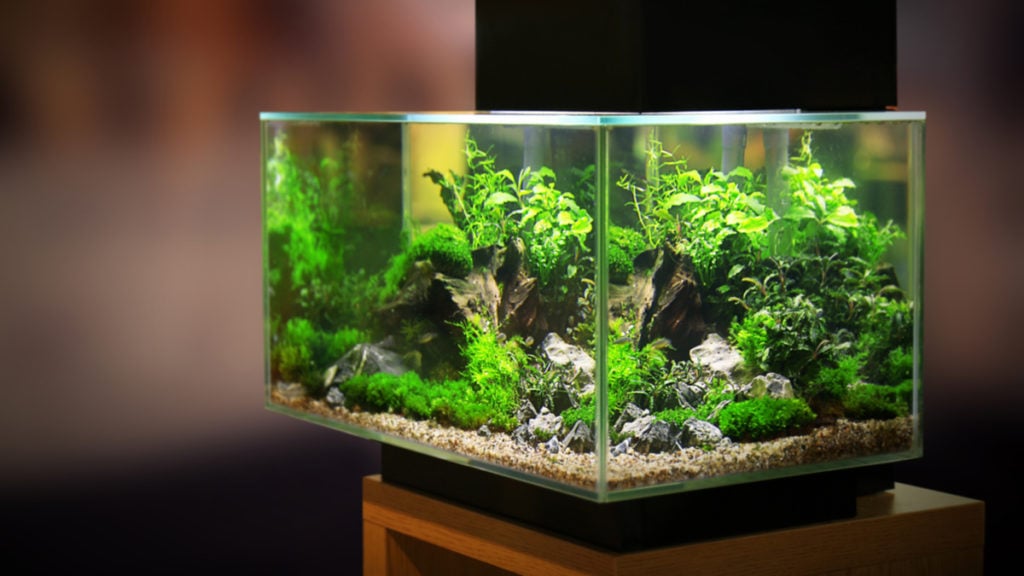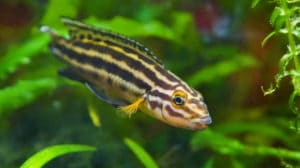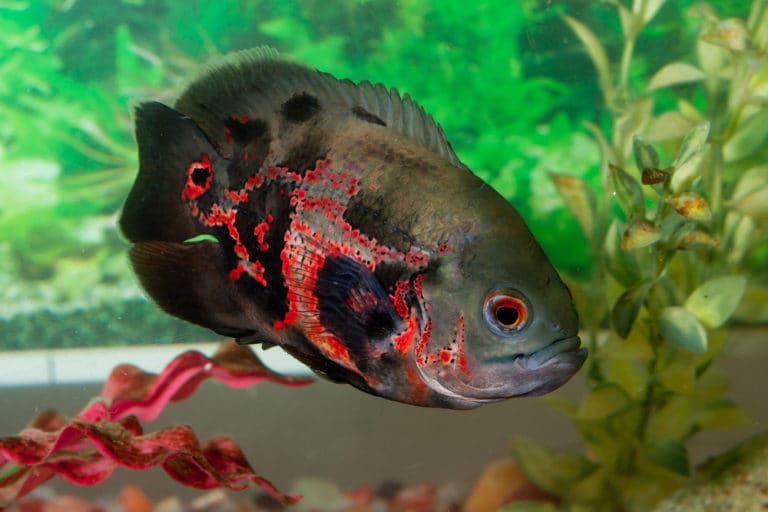Q.
I keep reading articles about planted aquariums that require carbon dioxide. Do I need carbon dioxide, or are there other ways to enhance the growth of my aquatic plants? I have a 3-gallon and a 12-gallon plant aquarium. I have a plant substrate, and I keep the light on a timer. Some of the plants are doing well, while others look like they are lacking growth.
– JoAnn Smith, California
A.
You do not have to add carbon dioxide to grow beautiful aquatic plants. Growth depends on how your aquaria are set up, especially with regard to lighting. If your lighting level is high, you are likely to have algae problems if you do not also add carbon dioxide; but with low to moderate lighting, added carbon dioxide is not necessary. All that your aquatic plants need is a reasonable balance of nutrients and light. Carbon dioxide is important for aquatic plant growth, but it is in the water even you don’t put it there yourself. Carbon dioxide enters the water from the atmosphere, from fish respiration and from various other microbiological processes that naturally occur in a planted fish aquarium. If you do not add carbon dioxide, there will be enough in the water (about 3 to 5 parts per million) for aquatic plants to grow under low to moderate lighting.
The obvious question is: “What is a low, moderate or high lighting level for plants?” Usually, we do not have enough information available to make a precise assessment of how light is available that aquatic plants can use for photosynthesis. The green part of the light spectrum is reflected by most plants, so it is not of much use for photosynthesis. How much light from the photosynthetically active region of the spectrum does a light bulb yield? This info is not usually available. Luckily however, aquatic plants are not very picky about the color of light outside of the center of the green region, so almost any broad-spectrum fluorescent or metal halide bulb will do. What matters most is how much light is produced, not what color it is. Aquatic plants are adaptable, so precision is not necessary.
Thus, there is a rule of thumb that we can use to assess lighting levels. Low lighting is about 1 1/2 watts per gallon (wpg) and is probably the least amount of light you need to provide an aquatic garden. Moderate lighting is about 2 wpg, and high lighting about 3 or more wpg. The lighting period should be roughly 10 hours per day, give or take an hour or two.
The wpg rule works well for broad-spectrum fluorescent bulbs and metal halide (MH) bulbs, and aquariums of about 10 gallons or more. It does not apply for incandescent bulbs because they are so inefficient; they convert about 95 to 97 percent of the electrical energy into heat and only 3 to 5 percent into light. Incandescents generally are not practical for lighting aquatic gardens—you need a lot of wattage to get enough light, and then you have too much heat. Fluorescents and MHs convert about 35 percent of electrical energy into light.
The wpg rule does not apply to very small planted aquariums, because often much of the light shines outside the aquarium. For example, I have a couple of three-fourths-gallon aquaria, each with a 7-watt fluorescent bulb. About half the light from each bulb is cast outside the small area of the aquarium. So, the wpg rule of thumb has to be adjusted for very small planted aquariums. If a lot of the light over reaches the aquarium, you can have more wpg. On larger planted aquariums, with the bulbs close to the top of the aquarium, virtually all of the light shines down into the aquarium.
Carbon dioxide isn’t required, unless you have about 3 or more wpg. On very small planted aquariums, you can get away with even higher wpg if much of the light is not going directly down into the aquarium. At higher lighting levels, more photosynthesis will occur but you are more likely to have algae blooms, unless you also add carbon dioxide.
If you add carbon dioxide, you will generally avoid the algae problems that higher lighting brings—but only to a point. It gets harder to avoid algae problems as you add more than 2 wpg. If you add carbon dioxide, aquatic plant growth will be more robust, even with low or moderate lighting. If you are interested in more robust growth, carbon dioxide is something you should consider.
You can add carbon dioxide easily and cheaply by setting up a yeast fermentation bottle, and feeding a tube from the bottle top into the intake of a powerhead or canister filter. If you don’t want to make one out of a plastic water or soda bottle, you can buy fish tank filters on the market.
Besides light and carbon dioxide, aquatic plants need a variety of other nutrients. Basically, in an aquarium with low to moderate lighting, the fish food you put in the planted aquarium can probably provide enough of the macronutrients. It is a good idea to add trace elements (micronutrients) with a commercially available trace element mix. About half my aquaria do not have added carbon dioxide, but I add trace mix to all my aquaria to ensure that at least the minimum amount of the micronutrients are available to the aquatic plants. On any planted aquarium with moderate or more lighting, plus added carbon dioxide, I also add macronutrients, potassium, nitrate and phosphate. The amount of macro and micronutrients must fit with the lighting level and amount of carbon dioxide—more lighting and more carbon dioxide means more nutrients to support faster growth.
JoAnn mentioned that her aquatic plants are doing well while others appeared to “lack growth.” I’ll assume they look healthy enough and that the issue is with the rate of growth. I don’t know the types or variety of aquatic plants JoAnn is growing, but I will say that it is not surprising for different kinds of aquatic plants to perform differently under a given set of conditions.
There are aquatic plants such as anubias, which grow very slowly even under the best conditions, and Amazon sword plants (Echinodorus bleheri), which grow very quickly with a lot of light, carbon dioxide and other nutrients, and grow very slowly when these things are available in only moderate amounts. Most stem plants grow quickly with plenty of light, carbon dioxide and other nutrients. Hygrophila polysperma, ambulia (Limnophila sessiliflora) and Bacopa monnieri are all fast growers. Yet some stem plants, like Lysimachia nummularia, grow relatively slowly.
With low lighting, just about any aquatic plants you are likely to come across will grow slowly. Anubias will seem not to grow at all for weeks. Anubias and some other plants actually do best with low light, whether from less wpg or by being shaded by other plants. These aquatic plants do not grow much faster with extra light, but the leaves, because they grow so slowly and live so long, eventually collect algae.
With moderate lighting, some aquatic plants will grow noticeably more quickly than at low lighting levels, even if you do not add carbon dioxide. If you do add carbon dioxide, plant growth will accelerate even more. Cryptocoryne species such as the wentii do very well with moderate lighting. Provide more light or add carbon dioxide, and wentii will grow faster, and will develop larger and longer leaves.
With high lighting plus carbon dioxide, the fast growers really take off. You might even find the regular pruning that fast growth demands to be a bit of a chore. Good examples are the Amazon sword plant and H. polysperma, which can grow at an amazing rate if you provide plenty of light, carbon dioxide and nutrients.
Some aquatic plants don’t do well without at least moderate lighting, and a few require high levels of lighting to really look nice. Didiplis diandre does not do well without at least moderate lighting. Under low lighting, the leaves will be small, and the stems will be leggy (meaning that instead of short spaces between the leaf nodes on the stems, the spaces will be long; the plant will also look stringy and sparse). The stems will be fuller under moderate lighting, and high lighting will make the upper portions take on a lovely reddish color.
Every aquarium is different. You might find that one type of plant does well in one of your aquaria but not in another—differences in setup, fish load and maintenance routines will affect plant performance. Try different aquatic plants, and see what keeps a healthy appearance in your aquaria.
Slow growth is to be expected in an aquarium with low lighting, or with moderate lighting and no added carbon dioxide. But a slowly growing garden can still be beautiful.
Posted by: Chewy Editorial
Feature Image: Africa Studio/Shutterstock.com
Share:









